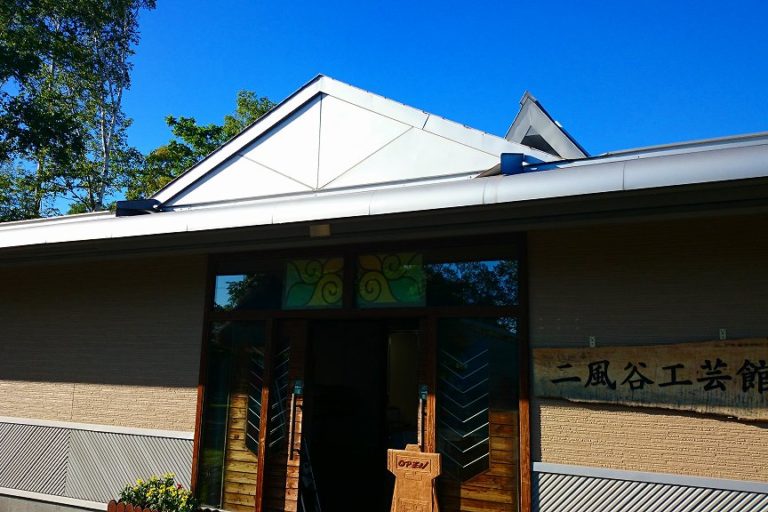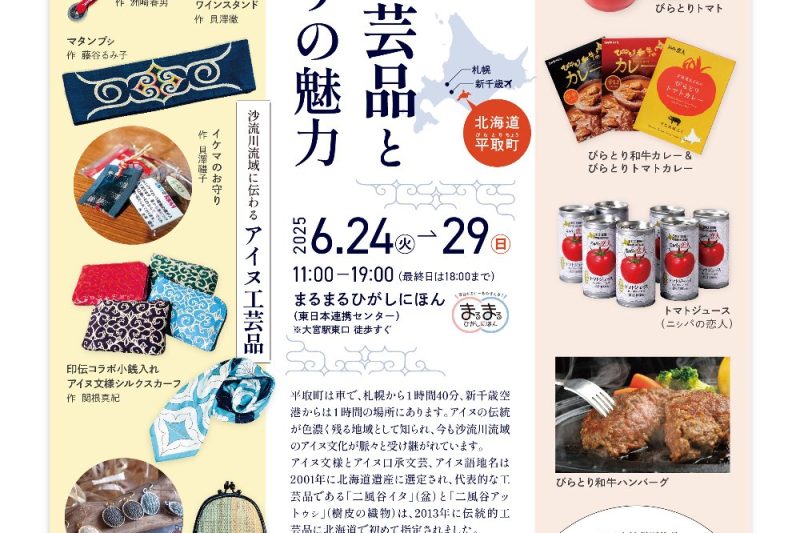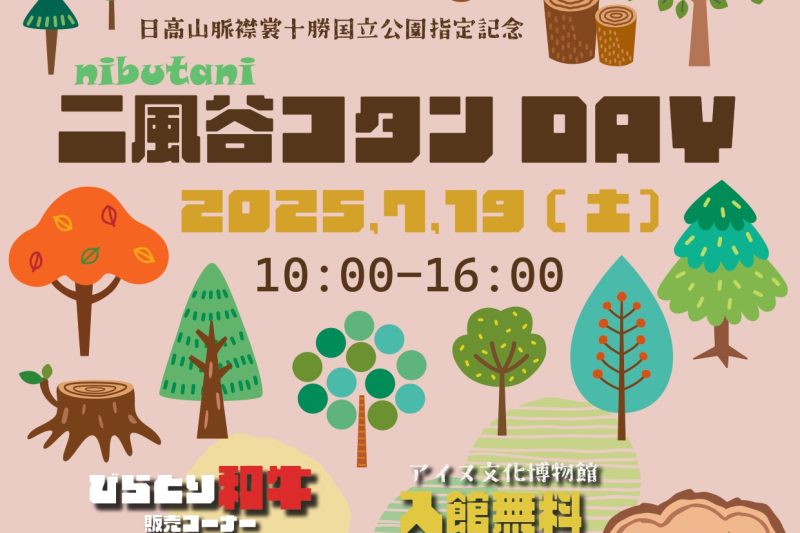ABOUT NIBUTANI
A town alive with the richness of Ainu culture
Nibutani, part of the town of Biratori, is in Hokkaido's Hidaka region on the Pacific Ocean side, spreading out in the valley of Hidaka's longest and largest river, the Saru. Legend says that long ago, the kamuy Okikurmi descended to the banks of the Saru and taught the people living there how to hunt, make tools, and other important parts of living culture. In Nibutani, such spiritual culture and legends have passed down and developed along with craft skills.One example is the rebuilt Nibutani Kotan, a village with restored cise—the Ainu language word for traditional houses—preserving an image of the village as it was long ago. They also host an annual boat-launching ceremony, the cip-sanke, to pray to the kamuy, as well as the kamuynomi ritual, and beyond that, performances of oral yukar literature and traditional ceremonial dance are elements of Ainu culture which have become treasures of the Saru River basin to preserve and pass on to the future.

NIBUTANI AINU CRAFT
Craft born of a dialog with nature
Inherited skills and the beauty of Ainu patterning
The Ainu culture is a spiritual one full of respect for mountains, rivers, plants, and animals, with a belief that everything in nature has a soul.The tools, clothes, and other products of Ainu handicraft that have been carefully preserved and handed down through generations to today are not simply "craft." They are the shaped by their creators with gratitude and respect to the spirits of nature, the kamuy, for the raw materials and blessings of nature they bestow.
Many Nibutani Ainu Crafts are decorated with exquisite patterns. These patterns have been handed down since their creation back in the time when woodcarving was considered men's work, and embroidery was for women. Basic patterns include morew-noka (spirals), ay-us-noka (thorny shapes), and sik-noka (eye shapes), and combining them allows for the creation of intricate graphical designs. This means that artists can preserve these traditions while still expressing themselves by arranging them in original designs. Patterns also show regional variation, and in Nibutani, for example, the woodcarving scale pattern called ramram-noka is a local characteristic.
Although there is some regional variation in interpretation, as well, it was a common Ainu belief that evil could enter through the openings of kimono collars and sleeves. The embroidery around those areas was sewn there in hopes it would offer protection from evil to keep wearers safe, and so the patterns have grown to carry that meaning as well. The artisan created these designs with a certain user in mind and with a prayer to the kamuy, so patterns differ from one maker to another and no two are alike.
Ainu patterns are thus not only aesthetically pleasing, but also an expression of one's innermost feelings, and of gratitude to the kamuy.
LEARN MORE
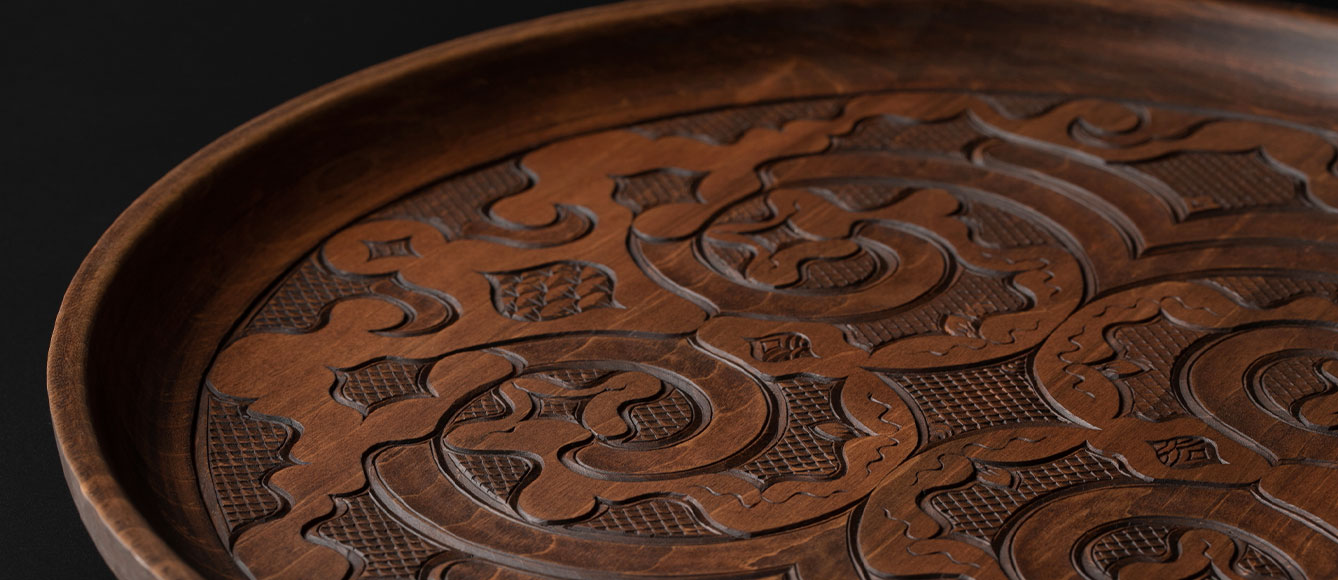
ABOUT NIBUTANI AINU CRAFT
Where traditional Ainu craft still lives
New Craftsmanship Begins in Nibutani
Nibutani, in Biratori, where inherited Ainu craft lives on.There are many places in Hokkaido where you can experience Ainu culture, but Nibutani is one where traditional craft techniques live on with particular vibrancy. Among them, the Nibutani Ita and Nibutani Attus were recognized by the Ministry of Economy, Trade and Industry as Traditional Craft Products (*1) in 2013, the only such registration in Hokkaido (*2).
Some Nibutani Ainu Crafts are found only here, particularly those with unique Nibutani patterns, and have gained popularity not only throughout Japan but around the world. Those popular goods, though, are not always part of daily life here.
The Nibutani Ainu Craft Project is a new initiative to create Ainu crafts for today based on the concept of Ainu designs for modern lifestyles.
With world-famous designer Junko Koshino as general design director, cooperating Ainu craftspeople and designers are working to create new ways to enjoy traditional craft. We hope that this will bring Ainu culture closer to ever more people.
(*1) Officially designated Traditional Craft Products are registered by the Ministry of Economy, Trade, and Industry as "products whose main manufacturing must be by hand; main materials must be used in a tradition going back over 100 years, and must be an established local product.
(*2) As of December 2022
LEARN MORE
(*2) As of December 2022
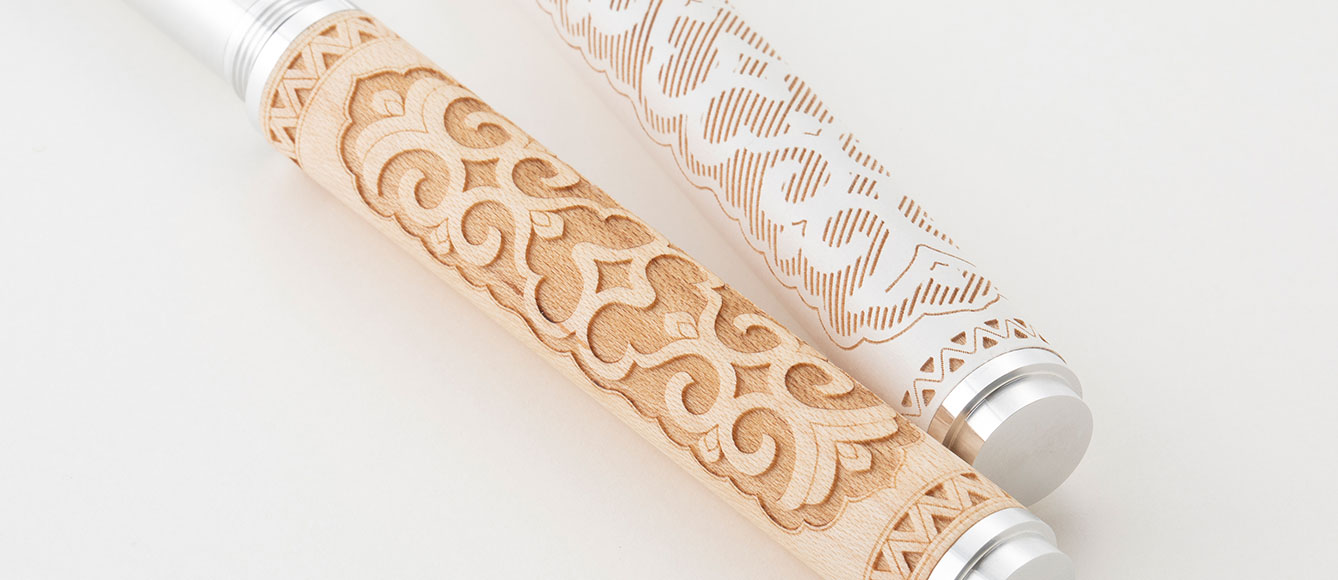
VISIT
Come and experience the traditional craft and culture of the Ainu people at Nibutani.
Nibutani, in the town of Biratori, Hokkaido on the Saru River, is an area where the traditions of the Ainu people have been passed down from generation to generation and still remain strong today.More recently, it has been a center for tradition helping to recreate traditional village, restore the waterfront, and Takumi no Michi—a street gathering master craftsmen's workshops.The town also has a museum, a crafts store, and a facility where visitors can try making crafts on their own.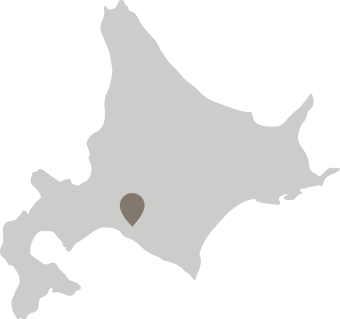
Nibutani Ainu Culture Museum
55, Nibutani, Biratori-cho Saru-gun, Hokkaido, 055-0101, Japan
【TEL】 +81(1457)2 2892
【URL】https://nibutani-ainu-museum.com/
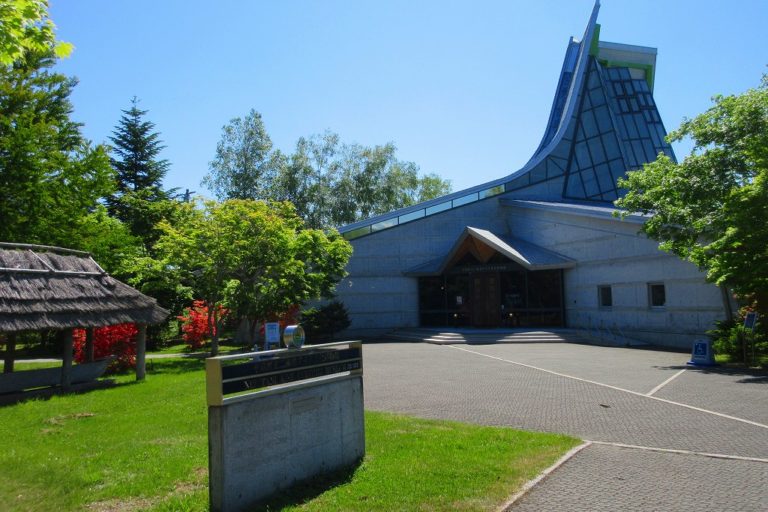
Biratori Ainu Crafts and Heritage Center Urespa
14,77, Nibutani, Biratori-cho Saru-gun, Hokkaido, 055-0101, Japan
【TEL】 +81(1457)3 7501
【URL】https://biratori-urespa.jp/
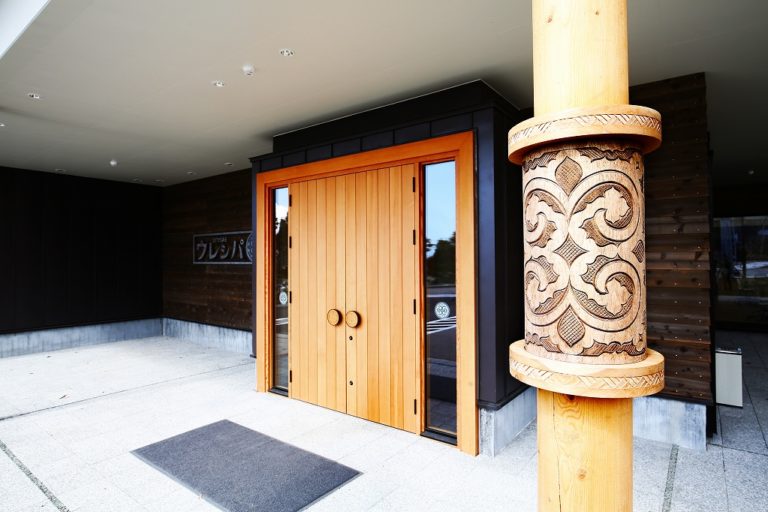
Kayano Shigeru Nibutani Ainu Museum
79,Nibutani, Biratori, Hokkaido,055-0101, Japan
【TEL】 +81(1457)2 3215
【URL】https://kayano-museum.com/
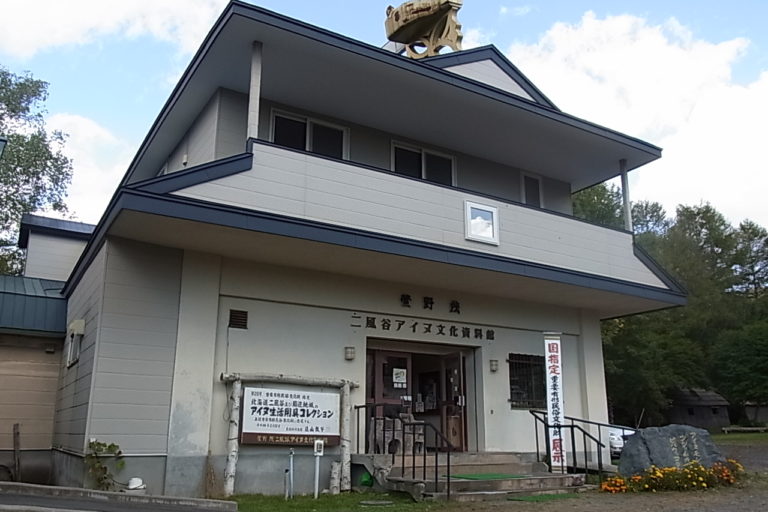
Guesthouse Nibutani Yanto
3,79,Nibutani, Biratori, Hokkaido,055-0101, Japan
【TEL】+81(1457)2 3280
【URL】https://nibutani-yanto.com/
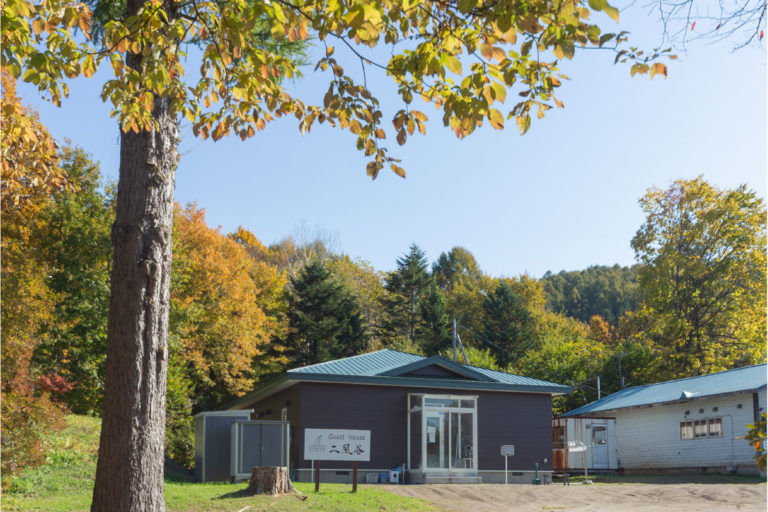
Biratori Onsen Yukara
6,92,Nibutani, Biratori, Hokkaido,055-0101, Japan
【TEL】+81(1457)2 3280
【URL】http://www.biratori-onsen.com/

Biratori Town Ainu Cultural Information Center
6,61,Nibutani, Biratori, Hokkaido,055-0101, Japan
【TEL】+81(1457)2 3299
